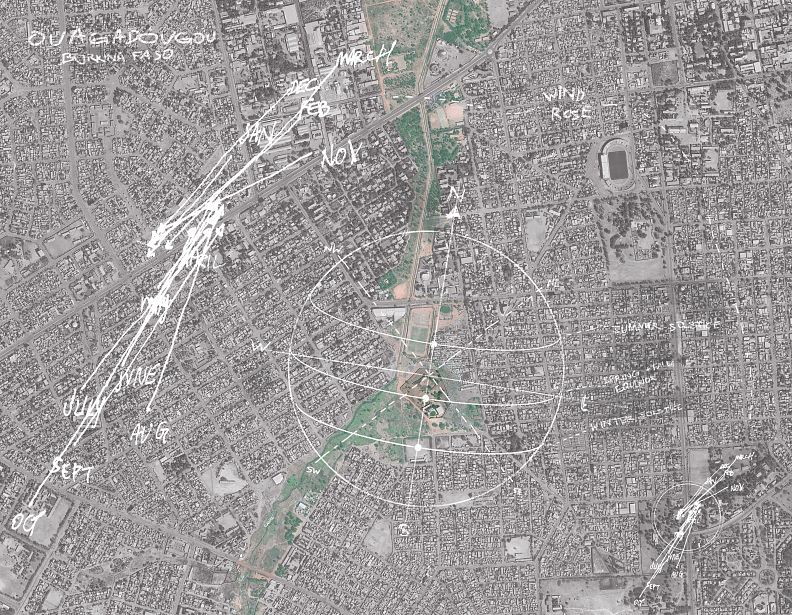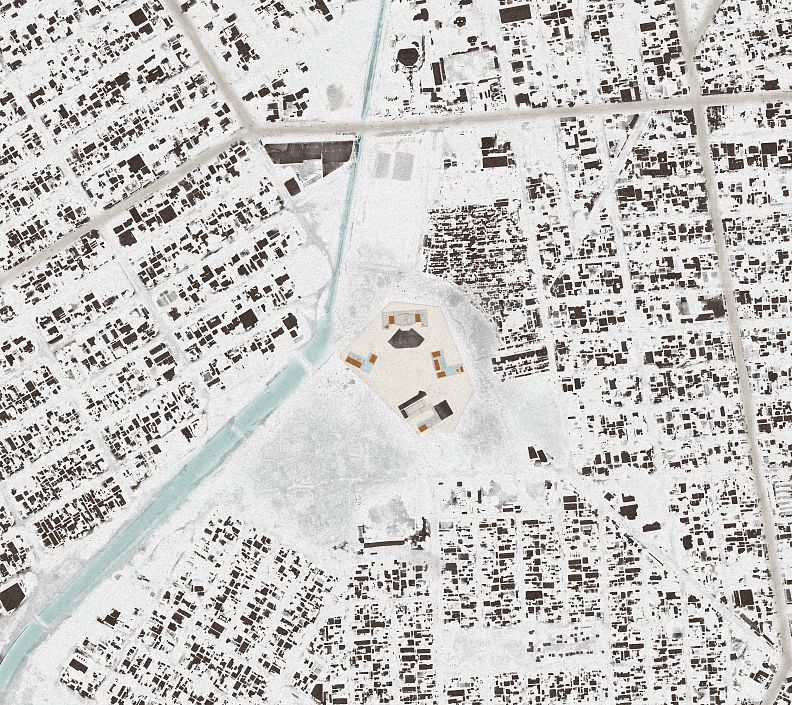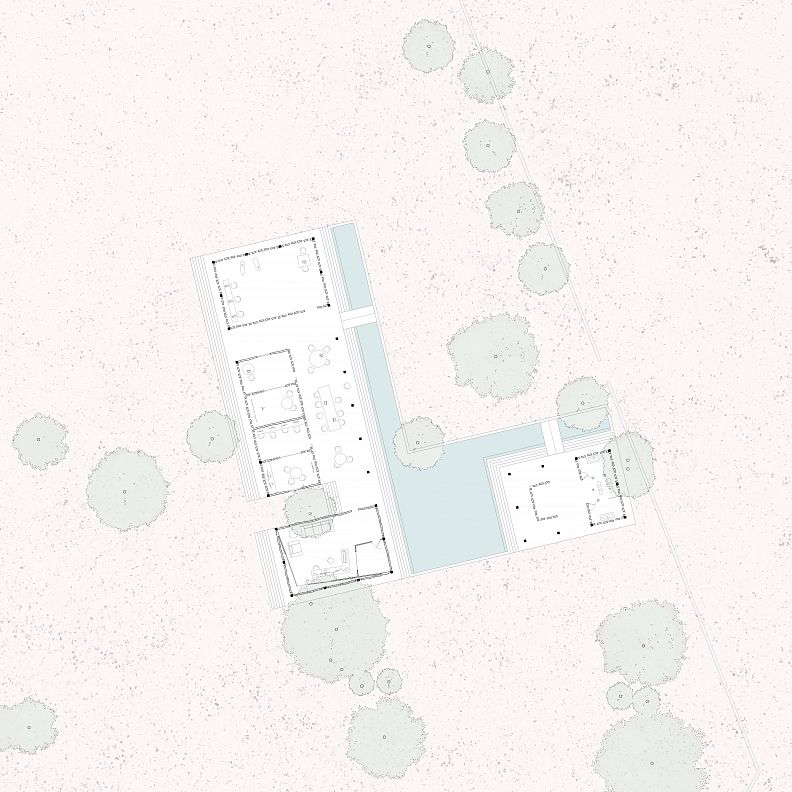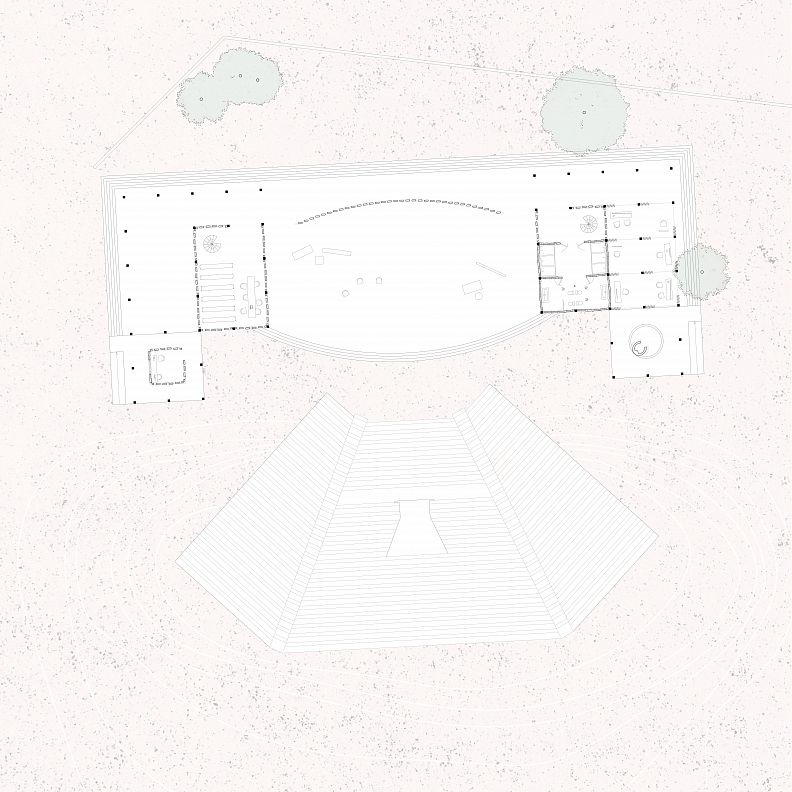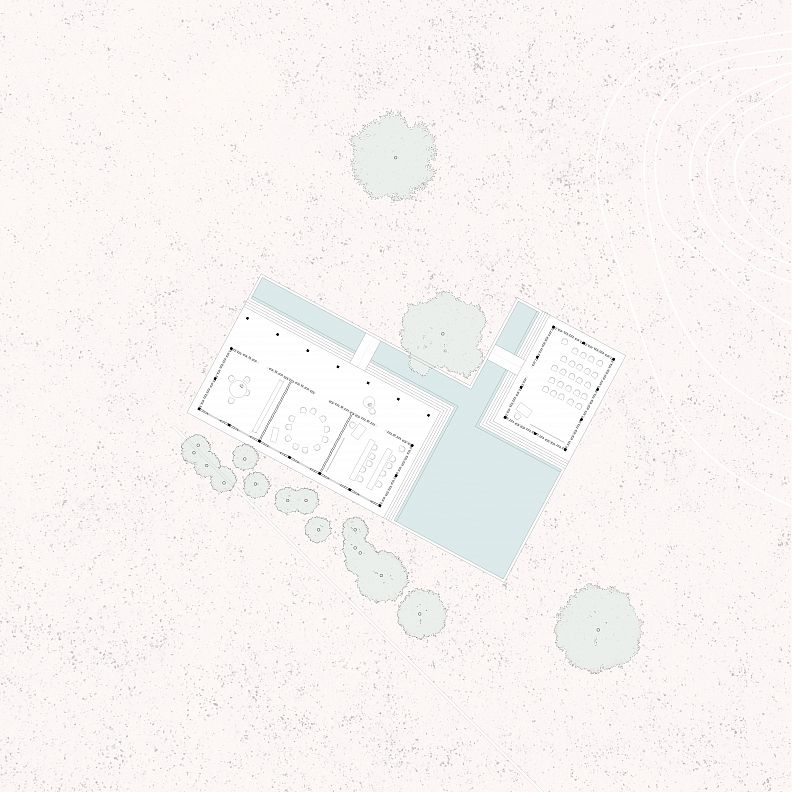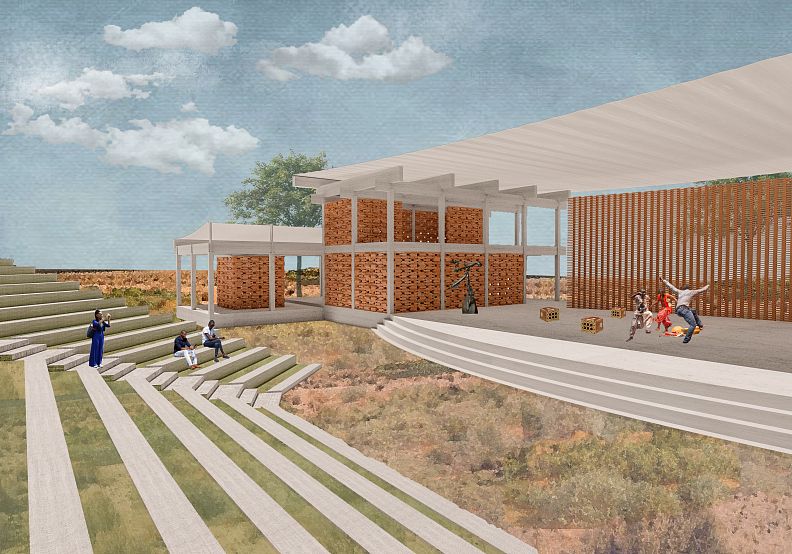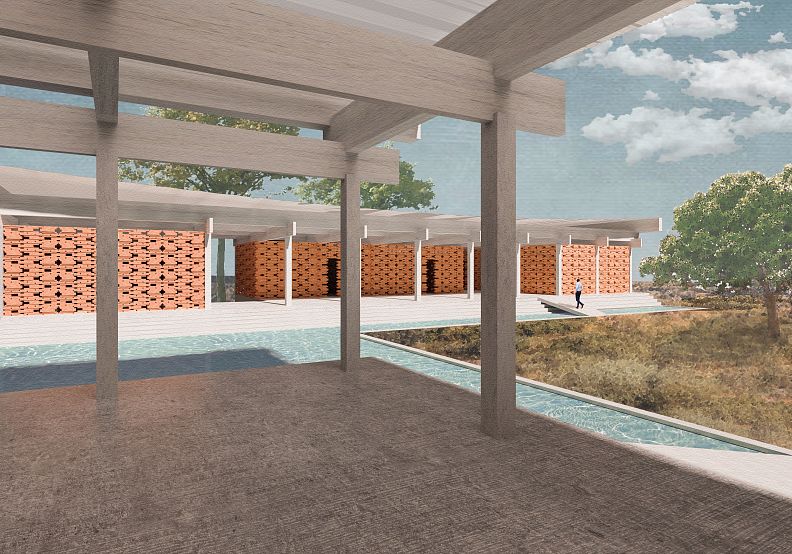Temple of the Arts

Project idea
The project is a center for the people of Ouagadougou. Four villages containing a series of open and closed rooms to create a central shared exterior space.
With the redevelopment, the CDC becomes not just a dance school, but a center for an arts focused community to form in Ouagadougou. The intimate exterior spaces of each village allow for communication among it's residents, while the central exterior space that is enclosed by all of the villages creates an outdoor space for all to share and gather collectively.
Project description
The orientation of each village is guided by the wind rose of Ouagadougou and placed to capture the passive ventilation the natural movement of air can supply.
The first village is the pre-existing building with an addition of an open air arcade and a studio.
The second village contains the recording studio, photography studio, video editing studio, computer lab, stage set and sewing room.
The third village contains the ampitheatre itself, the archive, an art gallery space, a kitchen area, changing rooms, and bathrooms and showers.
The fourth village contains classrooms and lecture rooms, are used for public engagement, education, and seminars.
Technical information
The construction of the buildings consist of a concrete plinth with a grid of columns, and concrete waffle beams. Between columns, hand pressed clay bricks are stacked in a pattern reminiscent of traditional African cloth patterns to create breathable walls which allows passive ventilation. Large corrugated metal sheets are suspended from two ends of the buildings, creating a catenary arch that's shaped by gravity. The roof tilts slightly forward, collecting and redirecting water to pools that surround the plinths. Within the rooms, fabrics are hung to create a similarly catenary drop ceiling while still allowing the rooms to remain open to the air.

